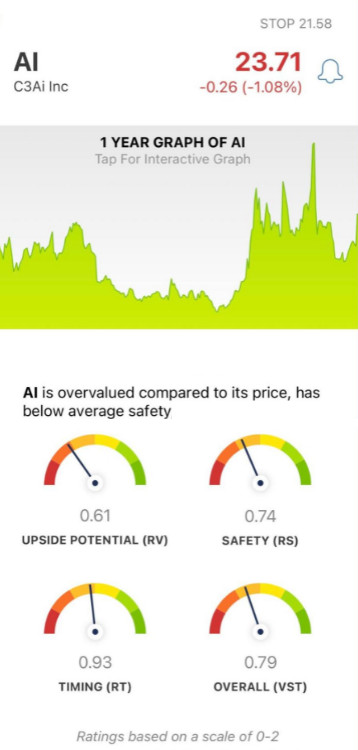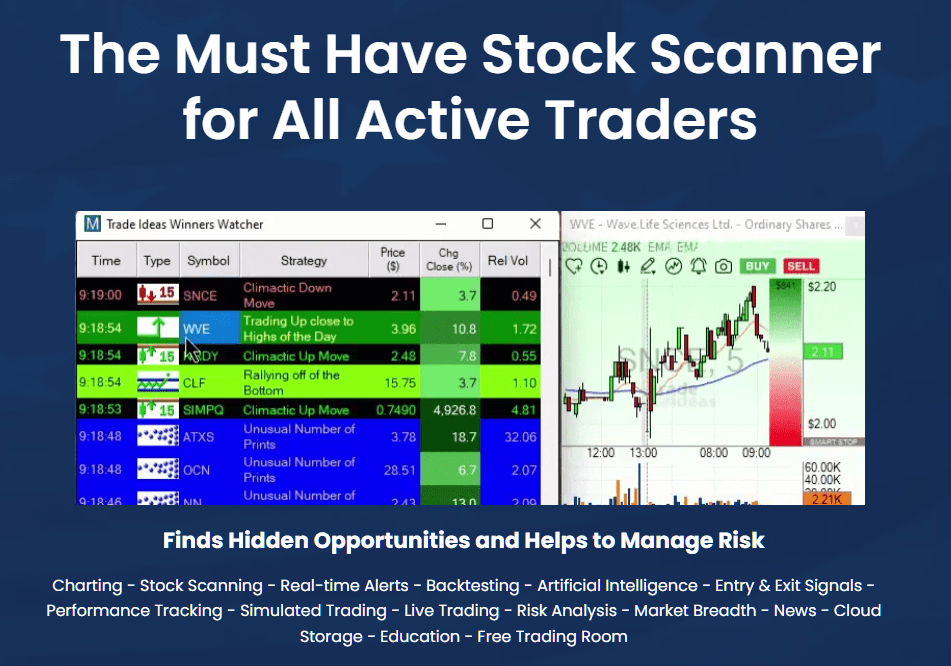20 Recommended Ideas For Choosing AI Stock Predicting Websites
20 Recommended Ideas For Choosing AI Stock Predicting Websites
Blog Article
Top 10 Tips On Assessing The Ai And Machine Learning Models Of Ai Analysis And Prediction Of Trading Platforms For Stocks
Analyzing the AI and machine learning (ML) models employed by trading and stock prediction platforms is vital to ensure they deliver precise, reliable, and actionable information. Incorrectly designed or overhyped model can lead financial losses and inaccurate forecasts. Here are the top ten tips for evaluating the AI/ML models used by these platforms:
1. Learn about the purpose of the model and the method of implementation
Determining the objective is important. Determine whether the model has been designed for long-term investing or for trading on a short-term basis.
Algorithm Transparency: Verify if the platform discloses what types of algorithms are employed (e.g. regression, neural networks for decision trees, reinforcement-learning).
Customizability. Check if the model's parameters can be adjusted to fit your specific trading strategy.
2. Analyze model performance measures
Accuracy: Check the model's accuracy in the prediction of future events. But, don't just depend on this measurement since it can be misleading when used in conjunction with financial markets.
Recall and precision: Determine how well the model can identify real positives (e.g. accurately forecasted price movements) and minimizes false positives.
Risk-adjusted results: Evaluate whether model predictions result in profitable trading after the accounting risk (e.g. Sharpe, Sortino, etc.).
3. Make sure you test the model using Backtesting
Performance history The model is evaluated by using data from the past to assess its performance in prior market conditions.
Testing with data that is not the sample is important to avoid overfitting.
Analysis of scenarios: Check the model's performance under different market conditions (e.g., bear markets, bull markets high volatility).
4. Check for Overfitting
Overfitting Signs: Look out for models that do exceptionally well when they are trained, but not so when using untrained data.
Regularization methods: Check if the platform uses techniques such as L1/L2 regularization or dropout in order to prevent overfitting.
Cross-validation: Make sure the platform uses cross-validation to test the model's generalizability.
5. Assess Feature Engineering
Find relevant features.
Select features: Ensure the system only includes important statistically relevant features and doesn't include irrelevant or irrelevant data.
Dynamic feature updates: Verify that the model can be adapted to new features or market conditions in the course of time.
6. Evaluate Model Explainability
Interpretability (clarity) It is important to check that the model is able to explain its assumptions clearly (e.g. importance of SHAP or feature importance).
Black-box platforms: Beware of platforms that use too complicated models (e.g. neural networks deep) without explanation tools.
A user-friendly experience: See whether the platform is able to provide actionable insight for traders in a way that they can comprehend.
7. Assess Model Adaptability
Market shifts: Determine if your model can adapt to market shifts (e.g. new rules, economic shifts, or black-swan events).
Continuous learning: Check whether the platform is continuously updating the model to include new data. This could improve the performance.
Feedback loops. Be sure your model takes into account feedback of users and real-world scenarios in order to improve.
8. Examine for Bias and fairness
Data bias: Make sure the training data is true to market conditions and is free of biases (e.g., overrepresentation of particular sectors or time periods).
Model bias: Make sure that the platform is actively monitoring biases in models and mitigates it.
Fairness: Make sure that the model doesn't disadvantage or favor specific sectors, stocks or trading techniques.
9. Evaluate the effectiveness of Computational
Speed: Determine whether the model can make predictions in real time, or with a minimum of delay. This is especially important for high-frequency traders.
Scalability Check the platform's capability to handle large data sets and users simultaneously without performance loss.
Resource usage : Determine if the model is optimized to make use of computational resources efficiently (e.g. GPU/TPU).
Review Transparency, Accountability and Other Issues
Documentation of the model: Ensure that the platform provides comprehensive documentation about the model's architecture and the process of training.
Third-party validation: Determine if the model was independently validated or audited by a third party.
Check if there are mechanisms in place to identify errors and malfunctions in models.
Bonus Tips:
Case studies and user reviews Utilize feedback from users and case studies to assess the performance in real-life situations of the model.
Trial period for free: Try the accuracy and predictability of the model by using a demo or a free trial.
Customer Support: Make sure that the platform provides robust technical support or model-related support.
With these suggestions You can easily evaluate the AI and ML models used by stock prediction platforms and ensure that they are trustworthy and transparent. They should also be aligned with your trading goals. Read the top our site about ai stocks to invest in for site info including ai stocks to invest in, ai trading software, free ai trading bot, ai trading software, ai day trading, stock market ai, investing ai, ai investment stock, ai stock predictions, best ai copyright to buy and more.
Top 10 Tips To Assess The Risk Management Of Stock Trading Platforms That Use Ai
Risk management is a key aspect of any AI trading platform. It helps to protect your capital while minimizing potential losses. A platform with strong risk management tools will assist you in navigating volatile markets and make informed decisions. Below are the top 10 tips for assessing the risks management capabilities of these platforms:
1. Evaluate Stop-Loss and Take-Profit Features
Customizable Levels: Make sure the platform allows you to create individual stop-loss limits and goals for taking profits in your strategies or trades.
Check if you can use trailing stops. These automatically adjust when the market shifts in your favor.
Make sure your platform allows you to make stop-loss orders that guarantee the closing of the trade at the price you have specified, even in unstable markets.
2. Useful Tools for Assessing Position Size
Fixed amount. You should have the option of defining your positions' sizes by an amount that is fixed in dollars.
Percentage of Portfolio: Find out whether it is possible to define the size of your position as a percentage of the total portfolio in order to manage risks proportionally.
Risk-reward ratio: Check to see if it is possible to define the risk-reward percentages for specific strategies or trades.
3. Check for Diversification Assistance
Multi-asset trading. Check that your platform is compatible with multiple asset classes such as ETFs, Forex, Options, and Stocks.
Sector allocation Check to see if there are tools that can be used to manage and monitor exposure to the sector.
Diversification of geographic areas. Check if the platform is able to trade on international markets, which will spread geographic risk.
4. Evaluation of leverage and margin controls
Margin requirements. Be aware of the requirements for margin prior to trading.
Find out the limits on leverage. You can use this option to manage your exposure to risk.
Margin call: Ensure that the platform is providing timely notifications for margin calls. This could help avoid account closure.
5. Evaluation of Risk Analytics and Reporting
Risk metrics: Be sure the platform provides the most important risk metrics for your portfolio (e.g. Value at Risk (VaR) Sharpe ratio and drawdown).
Evaluation of scenarios: Make sure the platform you're using permits you to create market scenarios and analyze the risks.
Performance reports: Determine whether you can obtain detailed reports on performance from the platform, which include the risk-adjusted outcomes.
6. Check for Real-Time Risk Monitoring
Portfolio monitoring. Make sure that your platform can track in real-time the risk associated with your portfolio.
Alerts and notifications: Check the ability of the platform to send real-time alerts for situations that could be risky (e.g. breached margins or Stop losses triggers).
Take a look at the dashboards for risk. If you're looking to see a complete picture of your risk, make sure that they're configurable.
7. Tests of Backtesting and Stress Evaluation
Stress testing. Make sure that the platform allows for you to stress test the strategy or portfolio under extreme market circumstances.
Backtesting. Find out if the platform permits backtesting. This is the application of historical data to evaluate the level of risk and performance.
Monte Carlo: Verify the platform's use of Monte Carlo-based simulations to assess risk and modeling a range of possible outcomes.
8. Evaluation of Compliance with Risk Management Regulations
Check that the platform satisfies the requirements for regulatory compliance (e.g. MiFID II regulations in Europe, Reg T regulations in the U.S.).
Best execution: Check if the platform adheres to best execution practices, ensuring transactions are executed at the best possible price, minimizing slippage.
Transparency - Check to see whether the platform is able to disclose risks in a clear, transparent way.
9. Check for User-Controlled Risk Parameters
Customized risk rules: Check that your platform permits you to set up your own risk management rules (e.g. the maximum daily loss, or the maximum size of a position).
Automated risk control: Check whether the system can automatically enforce rules for risk management in accordance with your predefined parameters.
Manual overrides See for the possibility of manually overriding the automated risk control in the event of an emergency.
Study Case Studies and User Feedback
User reviews: Examine reviews from customers to evaluate the effectiveness of the platform in managing risk.
Case studies and testimonials They will showcase the risk management capabilities of the platform.
Community forums: See whether the platform has an active user community where traders share risk management tips and strategies.
Bonus Tips
Trial period: You may avail a demo or a free trial to experience the risk management features available on the platform.
Customer support: Make sure the platform offers a solid support to any questions or concerns related to risk management.
Find educational sources.
Check out these suggestions to determine the risk-management capabilities of AI trading platforms that can predict or analyze stock prices. Choose a platform that offers the highest level of risk management and you will minimize your losses. It is essential to use a robust risk management tool to be able to navigate volatile markets. See the top rated best stocks to invest in advice for website info including ai trading software, incite ai, ai stock prediction, ai trading bot, ai stocks, ai for stock trading, best ai stocks to buy now, ai stock trading, trade ai, ai trading bot and more.